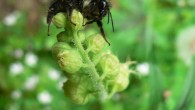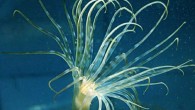An international team of scientists has mapped and analyzed the entire genome of the Komodo dragon (Varanus komodoensis), the largest extant monitor lizard. The Komodo dragon (Varanus komodoensis). Image credit: Gary Chambers. Komodo dragons can grow to 10 feet (3 m) in length and run up to 12 mph (20 kmh), allowing them to hunt large prey including deer and boar. Although they are cold-blooded, Komodo dragons can ramp up their metabolism to near...




















